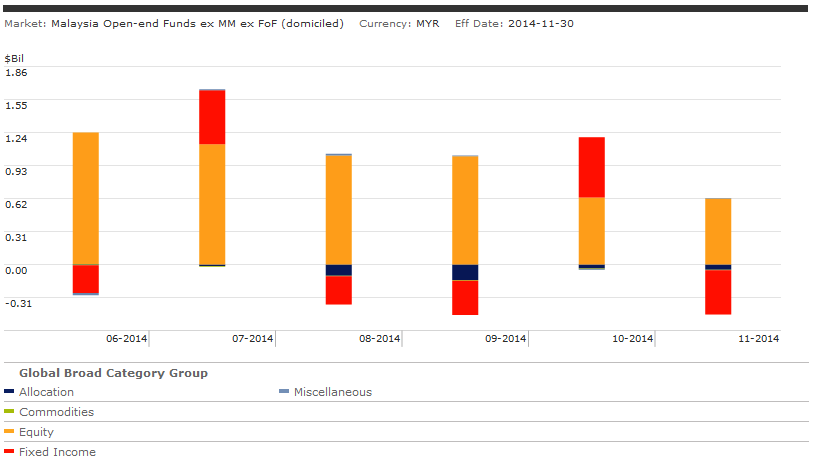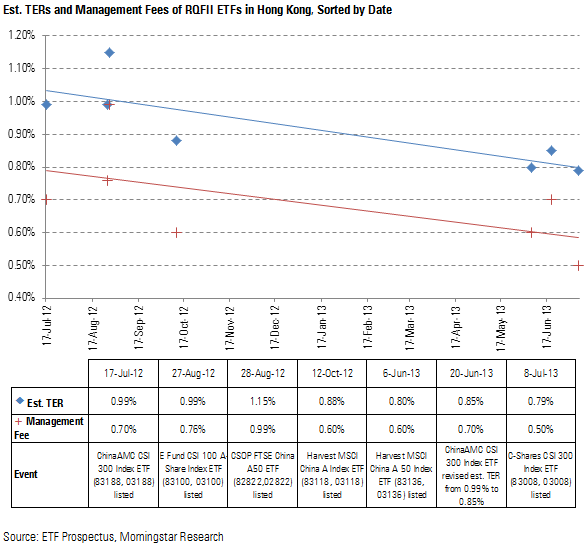Welcome to Morningstar Asia – Malaysia
Post on: 24 Июнь, 2015 No Comment

There are important trade-offs to consider when taking the foreign-currency exposure out of your international-equity ETF.
While there are only very few currency-hedged exchange-traded funds available in Asia, this crop of ETFs has come into vogue of late in the U.S. Investors interest has been piqued by the recent performance of the oldest and largest of them all: WisdomTrees Japan Hedged Equity (DXJ, listed in the U.S.). DXJ gained nearly 42% in 2013, as a massive dose of monetary stimulus contributed to an 18% decline in the value of the Japanese yen and steady improvement in the global economy gave Japans stock market an additional shot in the arm. Meanwhile, iShares MSCI Japan ETF (EWJ, listed in the U.S.)—which does not hedge its yen exposure—increased by 26% in calendar 2013. Clearly, it paid for U.S. investors in Japanese stocks to have a hedge against a declining yen in 2013. But was this a flash in the pan, or do currency hedges have value over longer time frames? With DXJ coming off a banner year and four new currency-hedged ETFs having debuted in the U.S. over the past month, now is a good time for investors to explore these questions.
Back to Basics
Before diving into the details, it makes sense to revisit the basics of currency fluctuations effects on security prices and the mechanics of hedging foreign-currency exposure.
In simple terms, a U.S. investors dollar-denominated return in a foreign security (or portfolio of them) is equal to the foreign securitys (or portfolios) return plus the foreign currency return.
U.S. dollar return = foreign security return + foreign currency return.
The effect of fluctuating exchange rates can have either a positive or negative effect on investors returns. Looking at the U.S.-listed ETFs mentioned earlier, in the case of DXJ, the yens depreciation had a significant negative effect on the U.S. dollar return for unhedged investors in Japanese stocks in 2013 (as evidenced by EWJs relative underperformance versus DXJ). In another extreme example, the 34% appreciation of the Brazilian real contributed to the 124% calendar-year return posted by the iShares MSCI Brazil Capped (EWZ) in 2009. These examples highlight two key points to keep in mind when considering currency exposure: 1) Currency returns can add or subtract from investors total return, and 2) currency fluctuations are volatile, are difficult to predict, and can be extreme in magnitude.
So how does currency hedging work in practice? Most currency-hedged ETFs will use currency forward contracts to reduce their foreign-currency exposure. A currency forward contract is an agreement between two parties to buy or sell a prespecified amount of a currency at some point in the future at an exchange rate agreed upon between the two parties. The duration of the forward contract is typically one month. Because the value of the forward contract is fixed ahead of time, and the value of the fund will fluctuate during the course of a month as asset prices fluctuate and cash flows into and out of the fund—the forward may not be a perfect hedge. Its also important to note that these hedges come at a cost, though their price tag typically amounts to just a few basis points.
The Effects of FX
With the basics out of the way, it is useful to look at some historical data to frame the effects of currency hedging on U.S. investors returns on their investments in foreign stocks. There are two key elements to consider when assessing the effects of currencies on equity portfolios: their contribution to return (as covered above) and their contribution to risk. Table 1 shows annualised return data dating back to 1969 for a trio of MSCI benchmarks in both their U.S. dollar and local currency denominations. These benchmarks are all currently tracked by one or more currency-hedged (and unhedged) ETFs.
Looking at 40-plus years of historical data, it is clear that it would not have paid for investors to hedge their exposure to the currencies represented in these benchmarks. In fact, in all three cases, currency returns were a significant contributor to total returns. Of course, few investors likely maintained exposure to any of these indexes over this entire period, and there were subperiods were the data looked far less favorable for those leaving their currency exposure unhedged, and some (like the case of Japan in 2013) that looked downright ugly. The one clear take-away here is that investors looking to mitigate a potential source of risk by hedging their currency exposures are also doing away with a potential source of return.

What about risk? Currency risk is a significant contributor to overall risk in the context of a foreign-equity portfolio. Table 2 shows trailing 10-year annualised returns and standard deviations for the same benchmarks featured in the first table. In the case of the MSCI EAFE and MSCI Germany benchmarks, it is clear—as evidenced in the difference in standard deviations between the U.S. dollar and local currency versions of the indexes—that currency exposure is a meaningful source of risk.
To Hedge or Not to Hedge?
The best answer to the question of whether it makes sense to hedge the currency exposure of an international stock portfolio is this: It depends. By hedging foreign-currency exposure, investors can mitigate a source of risk—at the expense of a potential source of return. The trade-off between the two is an important one, and investors decisions will depend on a variety of factors, including but not limited to their return requirements, risk tolerance, investment horizon, and the costs associated with hedging currency exposure.
Investors looking to hedge currency risk could also consider utilising derivatives, such as currency futures, to execute a hedging strategy alongside an unhedged ETF. As a general note of caution, investors should understand how these instruments work and the associated costs before making any investment decisions.














